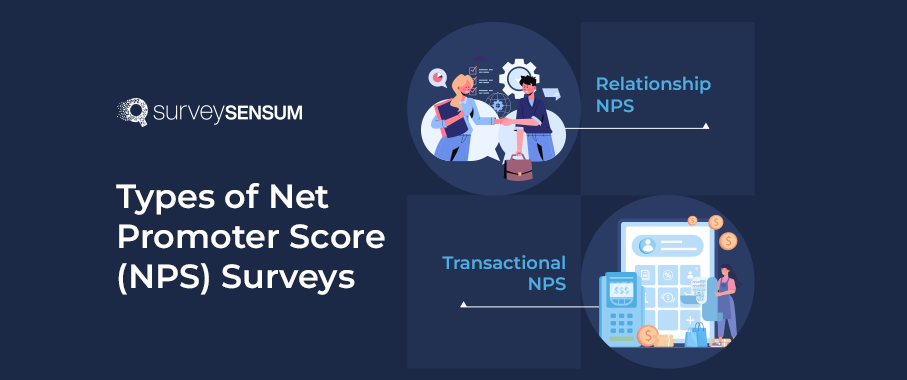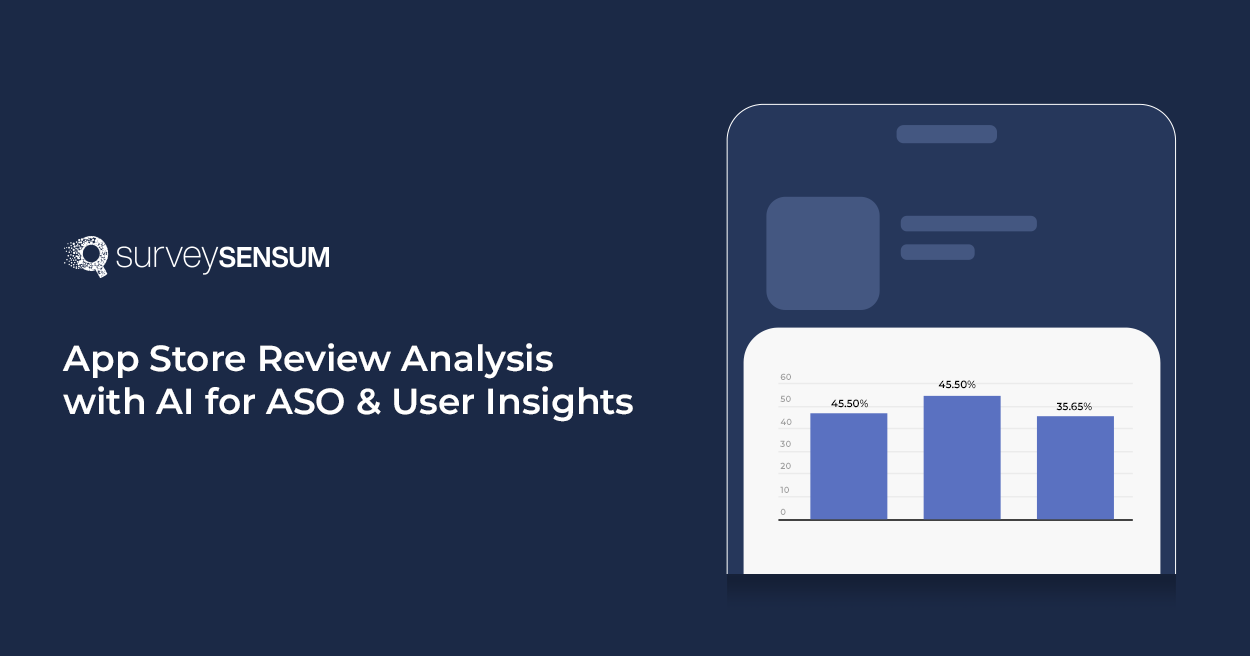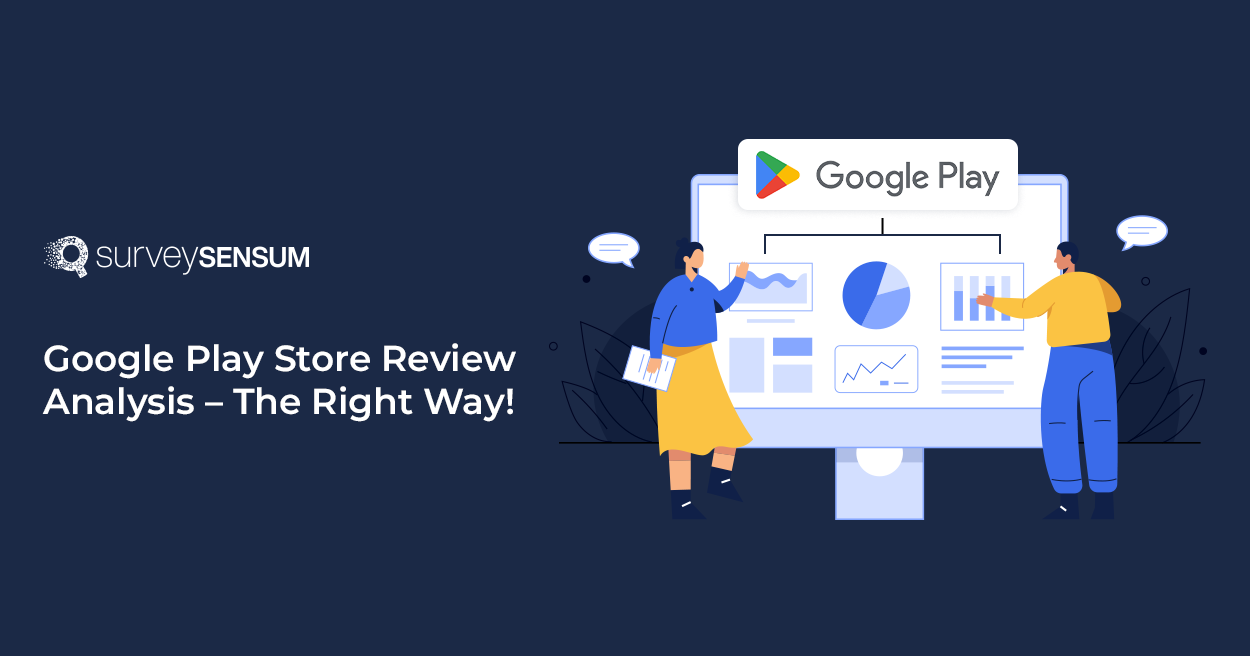

NPS methodology is one of the popular CX metrics in the business offering valuable insights to the businesses to measure customer loyalty and gauging the overall satisfaction levels.
By understanding your NPS, you can make informed decisions to enhance your products, services, and, ultimately, your customer experience.
However, have you ever stopped to consider that there might be different types of Net Promoter Score surveys?
If not, don’t worry—you’re not alone.
Many businesses overlook the various types of NPS surveys and fail to leverage their full potential.
In this blog, we aim to shed light on the different types of Net Promoter Score surveys and their distinct uses. We’ll delve into the importance of each type and guide when and how to implement them effectively with the best NPS software.
Now you know how to measure and calculate NPS. So, let us jump directly into different types of NPS surveys.
What are the Most Common Types of NPS?
There are three types of Net Promoter Score surveys that many customer-centric businesses use to listen to their customers and identify their pain points. The received data helps businesses to find areas of improvement to improve their products and services.
Following are the 3 different types of NPS surveys:
- Transactional NPS or tNPS
- Relationship NPS or rNPS
- Employee NPS or eNPS
Let’s begin with the transactional NPS survey also known as tNPS.
1. What is a Transactional NPS (tNPS) Survey?
As the name suggests, transactional Net Promoter Score deals with a specific transaction. It helps measure the customer experience of a particular transaction that concluded recently.
The question that you can ask in the tNPS survey is
Based on your recent transaction, how likely are you to recommend our product and services to your friend or colleague?
After sending a tNPS survey, you will receive instant feedback on how your customers feel post-transaction. If you receive negative feedback, you can take immediate action, and if you receive positive feedback, you can share it with your team to boost their morale.
When to Conduct tNPS Surveys?
You can conduct a tNPS survey on the following touchpoints:
1. Onboarding
→ How was your overall onboarding experience on a scale of 0-10?
NPS triggered during the onboarding process will help you uncover the effectiveness of your onboarding process, the flow, and help resources.
2. Post-customer service calls
→ On a scale of 0-10, how likely are you to recommend us to a friend or colleague based on the resolution of your recent customer support call?
NPS triggered after customer service calls will help you determine the satisfaction level of your customers with your customer service.
3. New product launch or product update
→ How satisfied are you with our latest product launch on a scale of 0-10?
NPS triggered after a new product launch or update will help you determine the satisfaction of your customers with the product.
4. Post-shopping
→ How was your recent shopping experience on a scale of 0-10?
NPS triggered after shopping will help you uncover the satisfaction level of your customers with your shopping experience and will help identify areas of improvement.
5. Free trials or demos
→ On a scale of 0-10, how likely are you to recommend our product/service to a friend or colleague based on your experience with the free trial/demo?
NPS triggered after a free trial run or demo will help you determine why the user converted or didn’t convert into your customer.
To effectively measure customer satisfaction, map the entire customer journey and identify touchpoints. After mapping the touchpoints, launch tNPS surveys on the targeted touchpoint.
If you want to know more about tNPS, read a comprehensive guide on the tNPS survey.
2. What is a Relationship NPS (rNPS) Survey?
Let’s understand rnps meaning with an example.
Laura often shops at Shopper Stop and she has been a loyal customer for 2 years.
Here, Shopper Stop has an opportunity to celebrate Laura’s priority of choosing Shopper Stop for shopping over its competitors.
Shopper Stop decided to send her a message to express gratitude for her constant support and asked her to participate in a relationship NPS survey. And they end the survey by offering her to become a part of their loyalty club.
This is where Shopper Stop can gauge and understand Laura’s overall experience.
So, now you know what a relationship NPS survey is.
Relationship NPS Survey is used to gauge customers’ overall loyalty and satisfaction with a business and also assess the likelihood of recommending your business to others.
When to Conduct rNPS Surveys?
You can send a relationship NPS survey in two ways – at regular intervals (quarterly or annually varying from business to business) OR product usage frequency of the customer.
1. Regular intervals
Send relationship NPS surveys at regular intervals, such as quarterly or annually, to track changes in customer satisfaction and loyalty over time.
2. Product usage frequency
Send relationship NPS surveys after the user has interacted with your product for a particular time.
For example, you have an invoicing app that users don’t use daily but visit once or twice a month so sending tNPS survey won’t help you as there is no fixed interaction point. So, launching rNPS after 2-4 logins will help you gain valuable insights.
Note: Don’t over-send the survey or you will risk survey fatigue. Use effective NPS software with a survey throttling feature that will enable you to automate the process of setting up a timeframe for each survey so that the same respondent doesn’t receive the same survey twice.
But how do tNPS and rNPS surveys differ from each other? Let’s find it out.
Create and launch different types of NPS surveys in just 10 minutes with SurveySensum and gather relevant and actionable insights to boost your customer loyalty.
4 Key Differences Between Transactional and Relationship NPS Surveys
| Transactional vs Relationship NPS Surveys |
| Timing | Sent right after the transaction | Sent periodically – like quarterly, annually, etc |
| Survey Questions | Questions are focused on a specific customer’s touchpoint | Questions are focused on the overall customer journey |
| Customer Engagement & Customer Loyalty | Seek to find the factors that influence customer engagement | Assess whether the cumulative experiences will encourage customers to refer the business to |
| Benefits | Gather feedback regarding the particular process changes they expect to see | Aim to figure out passive customers who could be converted into promoters |
1. Timing & Frequency
Sending the survey at the right time is crucial to measure customer expectations.
– Transactional NPS (tNPS)
A transactional Net Promoter Survey survey is sent right after the transaction with an NPS scale question. It is used for action-taking purposes– allowing you to analyze the received feedback and help identify issues that can be addressed promptly.
– Relationship NPS (rNPS)
A relationship NPS survey, on the other hand, is sent periodically — like quarterly, annually, etc. The prolonged period in sending the survey gives the customer enough time to create thoughtful feedback about the relationship with the business. Also, it focuses on overall customer perception of the organization, products, services, and communication strategy.
→ Deep dive into when is the best time to send an NPS survey.
2. Survey Questions
No matter which survey metric you choose and send, it is vital to ask the right questions to gather apt insights.
– Transactional NPS (tNPS)
Questions are focused on a specific customer’s touchpoint to measure their experience. Following are some examples of transactional NPS survey questions to ask:
- Based on your recent shopping experience, how likely are you to recommend us to your friends or colleagues?
- How was your refund experience with us on a scale of 0-10?
– Relationship NPS (rNPS)
Questions are focused on the overall customer journey to gauge their experience. Here are a few examples of relationship NPS survey questions to ask:
- Overall, how was your experience with us on a scale of 0-10?
- On a scale of 0-10, how likely are you to recommend our products and services to your friends and colleagues?
3. Customer Engagement & Customer Loyalty
tNPS and rNPS improve customer engagement and loyalty respectively in their ways.
– Transactional NPS (tNPS)
If you look deeper, transactional NPS surveys seek to find the factors that influence customer engagement.
It asks the following questions covering
- Their experience in using a feature, product, or service
- Any roadblocks or obstacles in the transaction that should be addressed
- Any recommendations for improvement
The feedback – you received covering the above-mentioned questions gives you instant customer experience feedback. If your customer gave you a bad review because of some unresolved issue, then you can take relevant action and close the feedback loop.
– Relationship NPS (rNPS)
On the other hand, relationship NPS surveys go beyond that and assess whether the cumulative experiences will encourage customers to refer the business to their friends and colleagues.
The objective of rNPS is to gauge customer loyalty that stems from previous transactions and interactions with the business. You can leverage the feedback from happy customers to turn them into promoters and add their experiences into testimonials to market your brand.
4. Benefits Accrued from the Survey
Here are some benefits that businesses get while collecting customer feedback.
– Transactional NPS (tNPS)
A transactional NPS survey helps businesses gather feedback from customers regarding the particular process changes they expect to see in the product or service.
– Relationship NPS (rNPS)
Relationship NPS surveys, on the other hand, aim to figure out passive customers who could be converted into promoters. They look at customer relationships from a bird’s eye view and help make long-term changes that will boost customer loyalty. This aids in overall improving customer retention.
Launch and analyze your own NPS survey with SurveySensum’s NPS experts to boost your business growth and stay ahead of your competitors.
Now you know the difference between transactional and relationship NPS, so which one are you going to opt for?
Transactional vs Relationship NPS Survey – Which One Should You Go for?
As mentioned above, Transactional NPS asks customers to recommend their business to others after a certain interaction.
Is this the right approach?
Do you think your customer will recommend your product or business just after one single transaction?
– No
That’s why it’s always advisable to launch a Relationship NPS and CSAT/CES survey instead of a Transactional NPS survey.
- A relationship survey will help you to gauge customer loyalty as a whole over a period of time.
- A CSAT survey will help you to gauge customer satisfaction post-interaction.
- And the CES survey will update you about how much was required by the customer to reach your business.
While many businesses use tNPS to gauge experience at each touchpoint, it is not recommended.
So, after choosing the survey, don’t forget to put the data to use.
How To Use rNPS and tNPS Data Effectively?
Using both relational and transactional NPS data effectively can drive business growth. Here’s how you can use the data effectively.
1. Offer Personalized Help To Detractors
Segment the detractors, passives, and promoters from the NPS data as this will help you to identify pain points and address them individually. Now, reach out to detractors individually to offer personalized assistance, whether it’s resolving their issues, providing additional support, or offering special incentives to win back their loyalty.
By addressing detractors’ concerns directly, you show that you care about their experience and value their feedback. This will help you foster trust, prevent churn, and improve overall customer satisfaction.
2. Talk To Passives To Understand Customer Expectations
Passives represent a significant opportunity for improvement as they may be satisfied but not fully engaged or loyal. Identify your passive customers and invite them to participate in interviews or surveys to gather more insights about their expectations, needs, and areas for enhancement. But before that make sure your objective is clear and your survey questions are well-structured.
By understanding what drives passives’ attitudes towards your business, you can identify areas for improvement, understand customer expectations, take proactive steps to improve yourself, and convert passives into promoters.
3. Encourage Promoters to Drive Word-of-Mouth Referrals
Your promoters are already happy, engaged, and satisfied with you, so leverage that to drive positive word-of-mouth referrals and create brand advocates.
Offer incentives, rewards, or referral programs to incentivize promoters to share their positive experiences with others. By harnessing the power of promoters, you can amplify word-of-mouth referrals, attract new customers, and drive business growth organically.
→ Suggested Read: 12 surefire strategies on how to improve your NPS score.
Don’t let your NPS data collect dust. Reach out to your detractors and passives and convert them to your promoters with SurveySensum!
Now, that your data is collected and put to use, don’t forget to implement the best practices.
Best Practices to Conduct tNPS and rNPS Surveys

Here are the best practices that you can implement in your organization to drive business.
- Know the OBJECTIVE of your survey.
- Send the survey at the RIGHT TIME and CHANNEL.
- Make the survey CONCISE and PERSONALIZE.
- Ask STRAIGHTFORWARD questions that deliver and invoke the right responses from respondents.
- Analyze and take relevant action on the gathered data.
- SHARE survey results with your organization and make data-driven decisions.
- Constantly TRACK tNPS and rNPS scores to evaluate the trends and effectiveness of the action taken.
- CLOSE THE FEEDBACK LOOP by engaging and resolving their issues.
Tip: Capture attention and engage respondents more effectively by color-coding your NPS scale.
By following these best practices, you can effectively leverage transactional and relationship NPS surveys.
Now, creating, launching, and analyzing NPS surveys doesn’t have to be a headache with the automation and advanced survey setting of the NPS tools.
And that’s not it!
There is another type of NPS survey – eNPS Surveys.
What is the Employee NPS (eNPS) Survey?

Employee NPS aka eNPS is usually used by businesses to measure their employee’s happiness and satisfaction with their work culture. It is an easy and effective way to measure your employee engagement.
Just like tNPS and rNPS are used for gauging customer satisfaction, organizations measure their employees’ pulse via eNPS.
When to Conduct eNPS Surveys?
You can conduct eNPS surveys quarterly or annually to know how likely your employees are to recommend your organization to your friends and colleagues.
With eNPS surveys, you can also
- Gauge overall employee loyalty
- Reduce employee attrition
- Allow converting negative employees into positive ones
You can also boost your employee engagement by trying pulse surveys.
Conclusion
Everyone knows the power of NPS and now you also know how its types can offer valuable insights into customer and employee satisfaction. By understanding different types of Net Promoter Score, exploring their differences, and implementing best practices, you can leverage NPS effectively to enhance customer loyalty, drive growth, and create a positive organizational culture.
But remember, the key to success lies in continuously monitoring and acting upon the feedback received through NPS surveys. And to do that you need an efficient NPS tool that will help you create NPS surveys, automate the NPS analysis process, give you detailed NPS reports on detractors, and enable you to close the feedback loop, retaining customers.
Frequently Asked Questions
Net promoters can be classified into three main categories based on their responses to the NPS question:
- Promoters: Customers who respond with a score of 9 or 10. They are enthusiastic about the company’s products or services and are likely to recommend them to others.
- Passives: Customers who give a score of 7 or 8. They are somewhat satisfied with the company but are not as enthusiastic as promoters.
- Detractors: Customers who give a score between 0 and 6. They are unhappy customers who may have had negative experiences with the company’s products or services.
The three Net Promoter Scores are:
- Promoters: Customers who respond with a score of 9 or 10.
- Passives: Customers who give a score of 7 or 8.
- Detractors: Customers who give a score between 0 and 6.
NPS scores are commonly classified into three categories:
- Excellent: NPS scores ranging from 50 to 100, indicates a high level of customer satisfaction and loyalty.
- Good: NPS scores between 0 and 49 show a positive net promoter score but with room for improvement.
- Needs Improvement: NPS scores below 0 indicate that the company has more detractors than promoters.
NPS promoter categories are based on the responses to the NPS question and include:
- Promoters: Customers who give a score of 9 or 10 and are likely to recommend the company.
- Passives: Customers who give a score of 7 or 8. They are satisfied but not enthusiastic enough to actively promote the company.
- Detractors: Customers who give a score of 0 to 6. They are unhappy with the company’s products or services and may actively discourage others from using them.
NPS benchmarking involves comparing your NPS to that of other companies or industry standards to assess your performance relative to peers. This comparison helps you understand where you stand in terms of customer satisfaction and loyalty compared to competitors or industry averages.

















